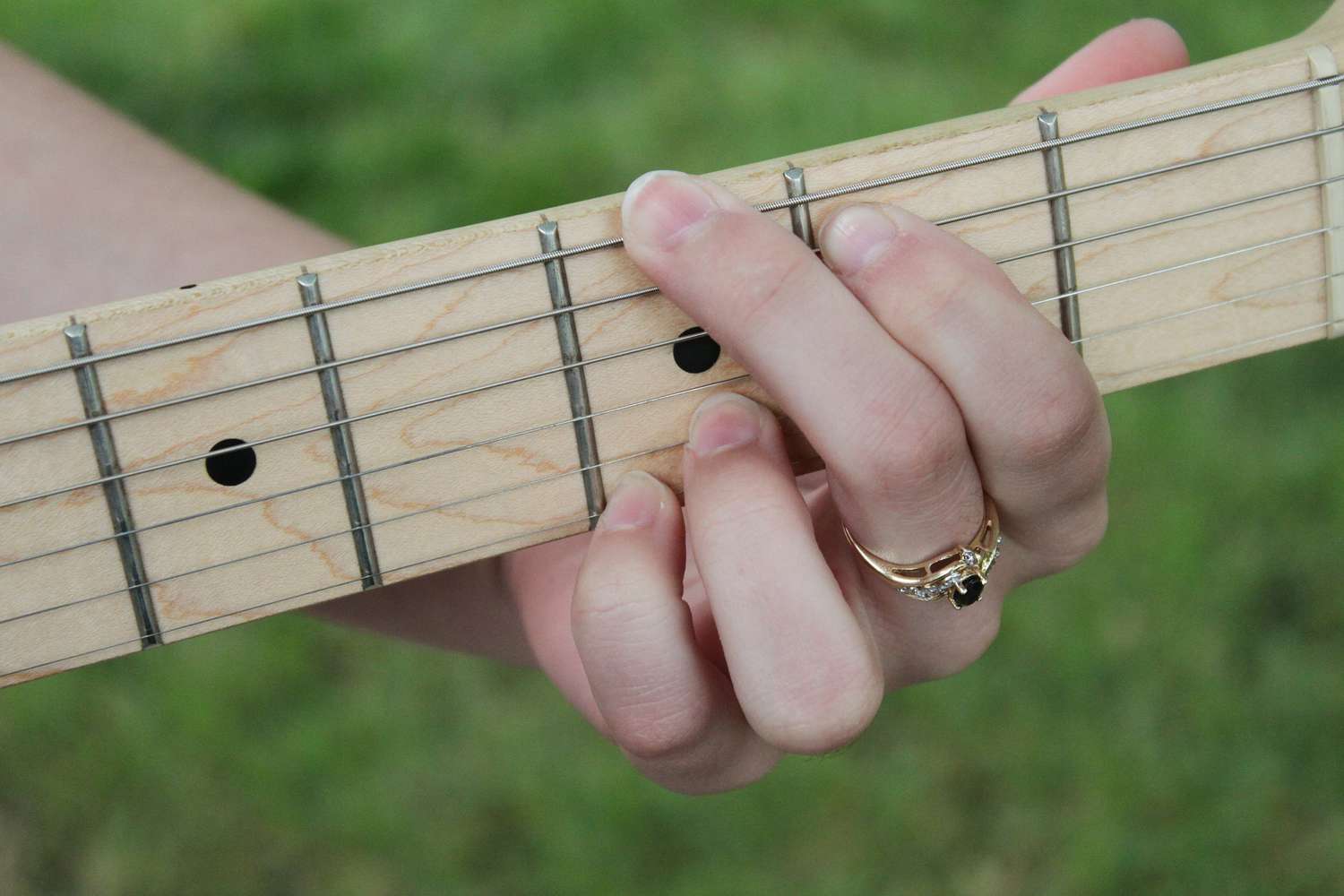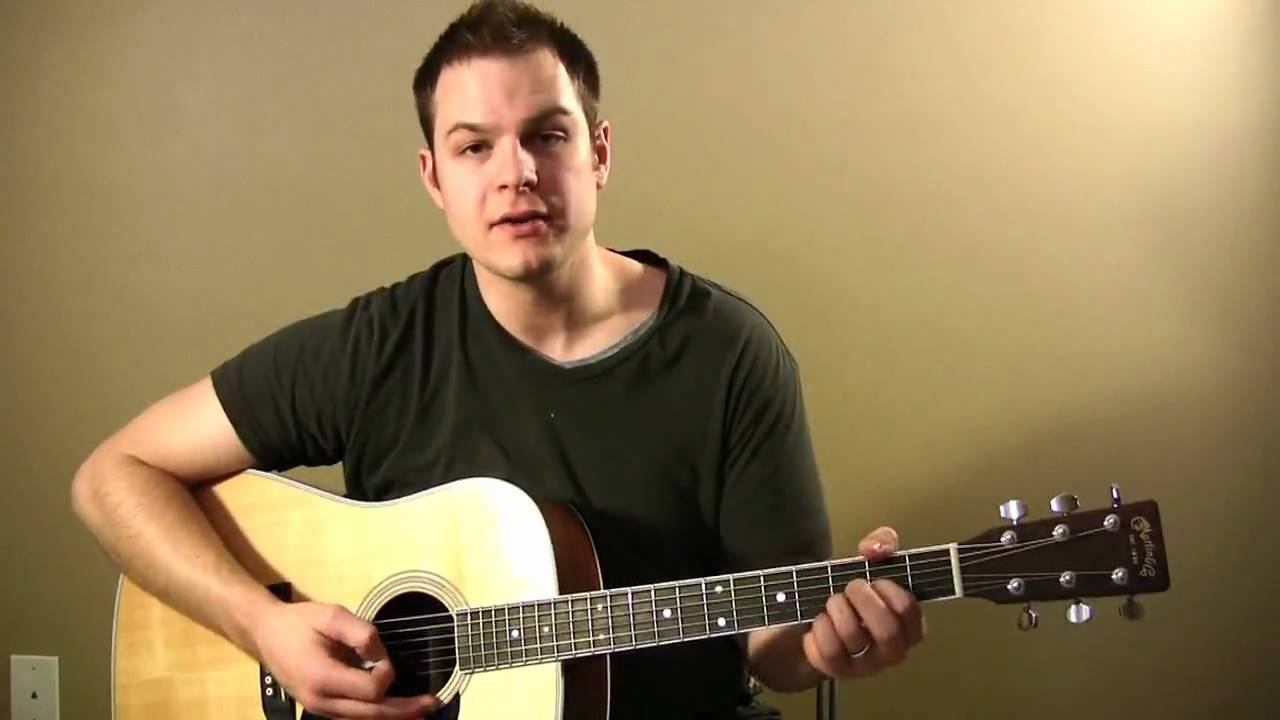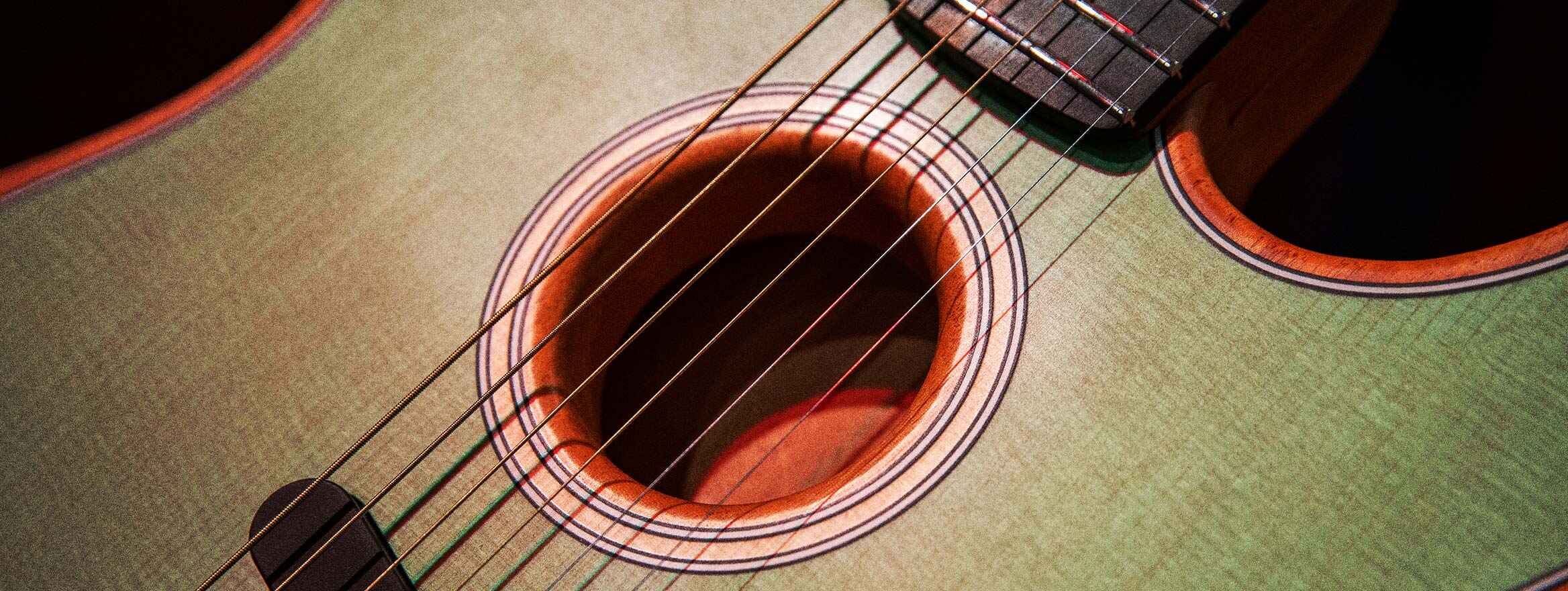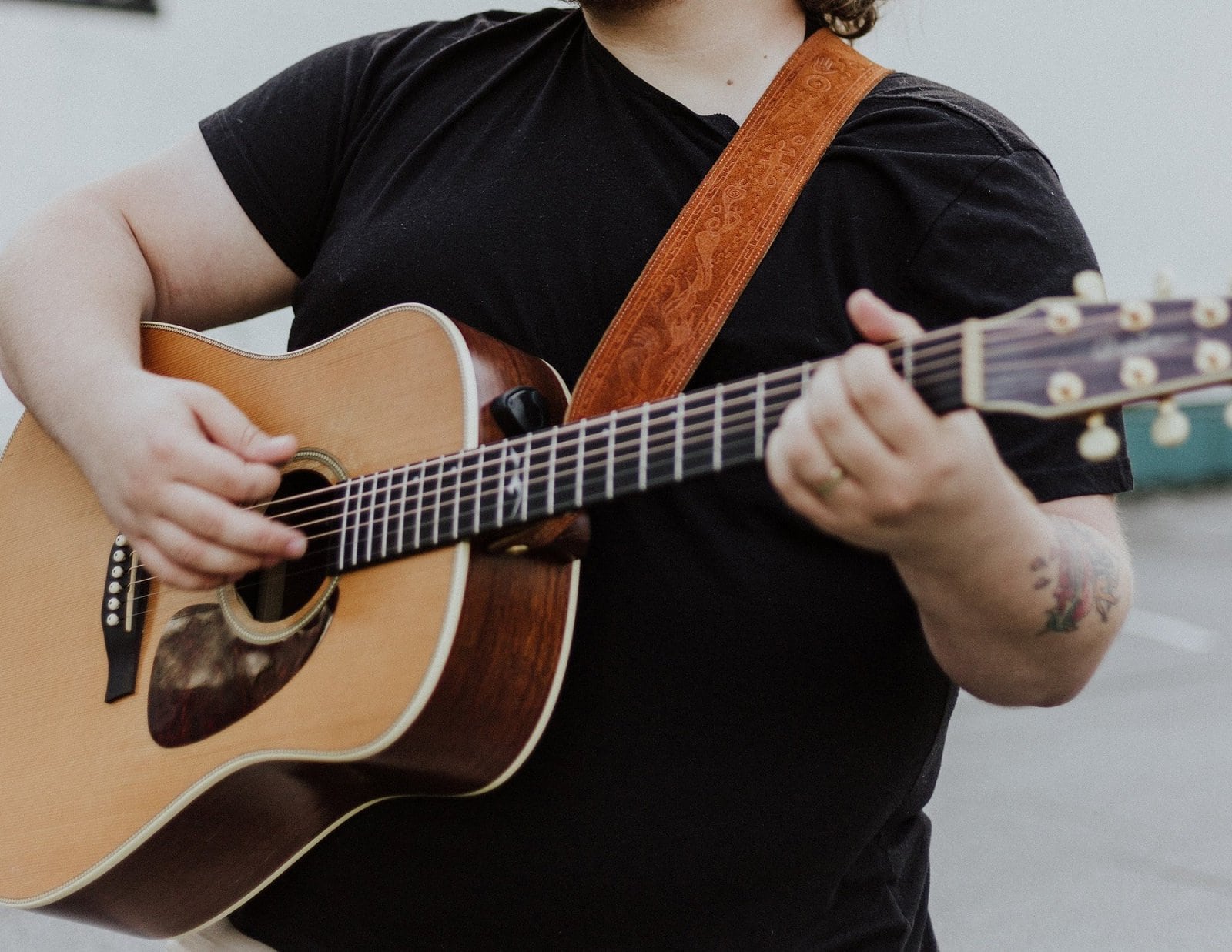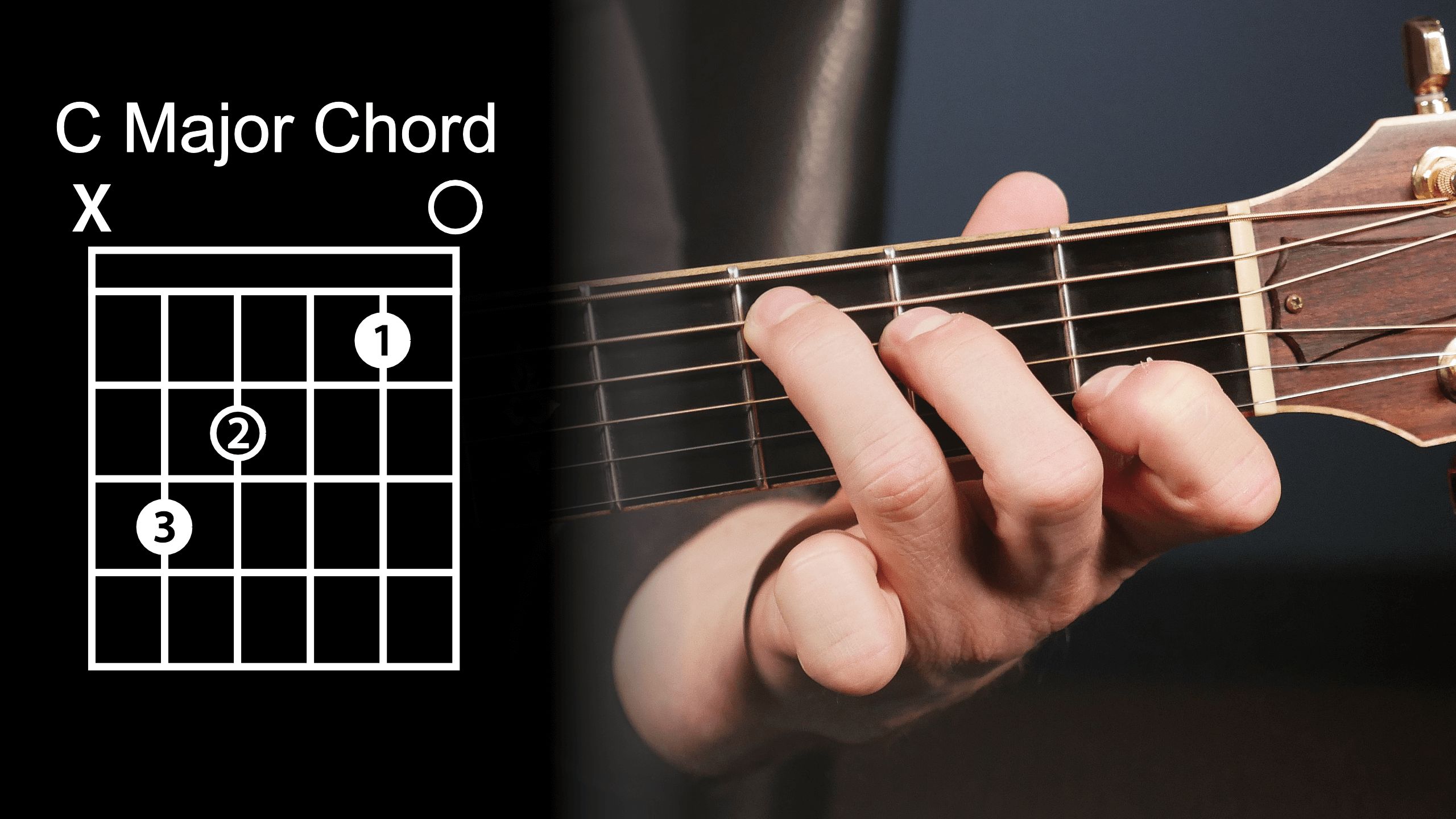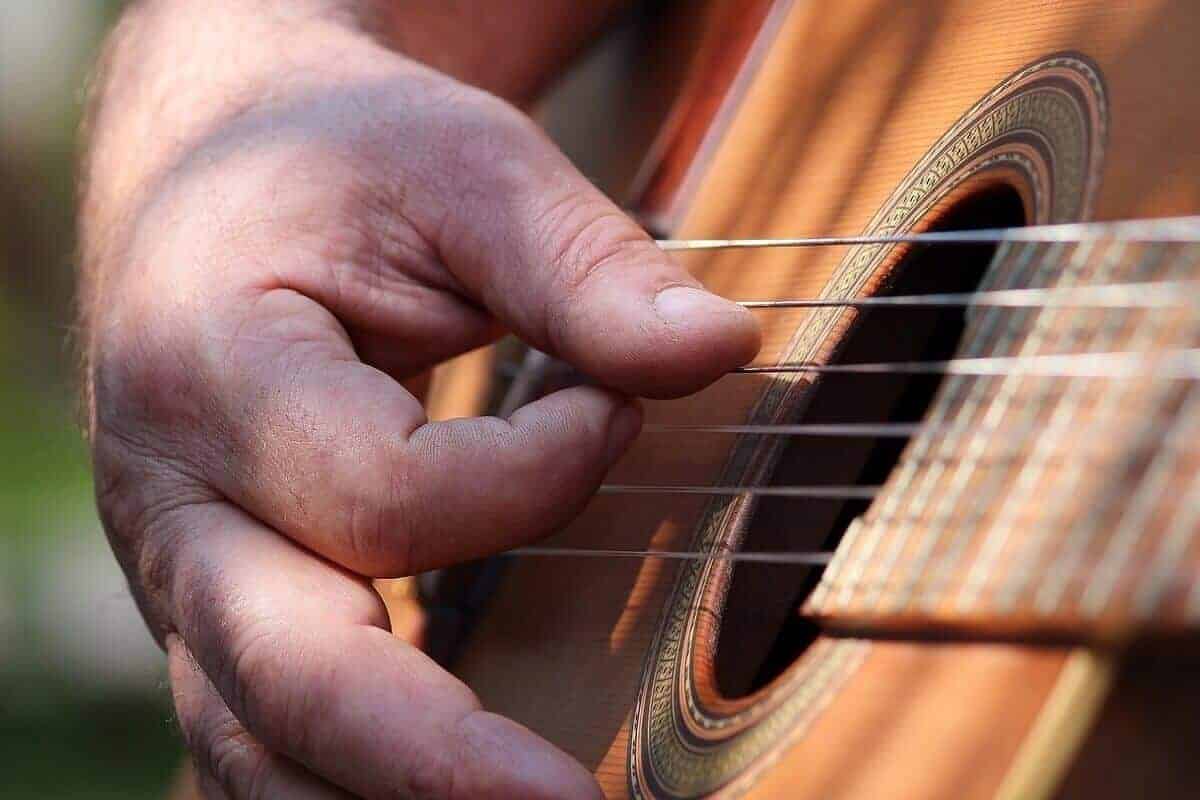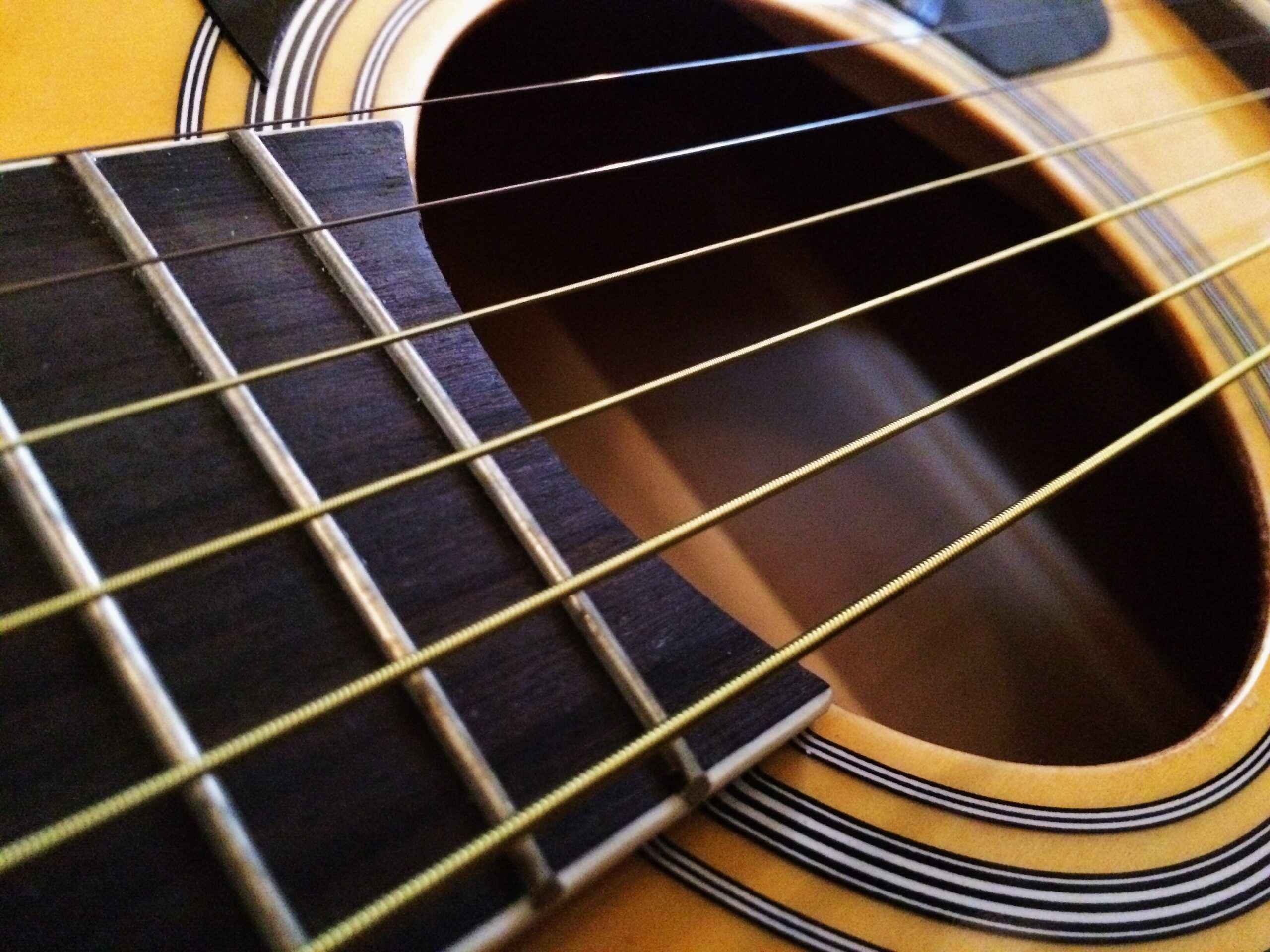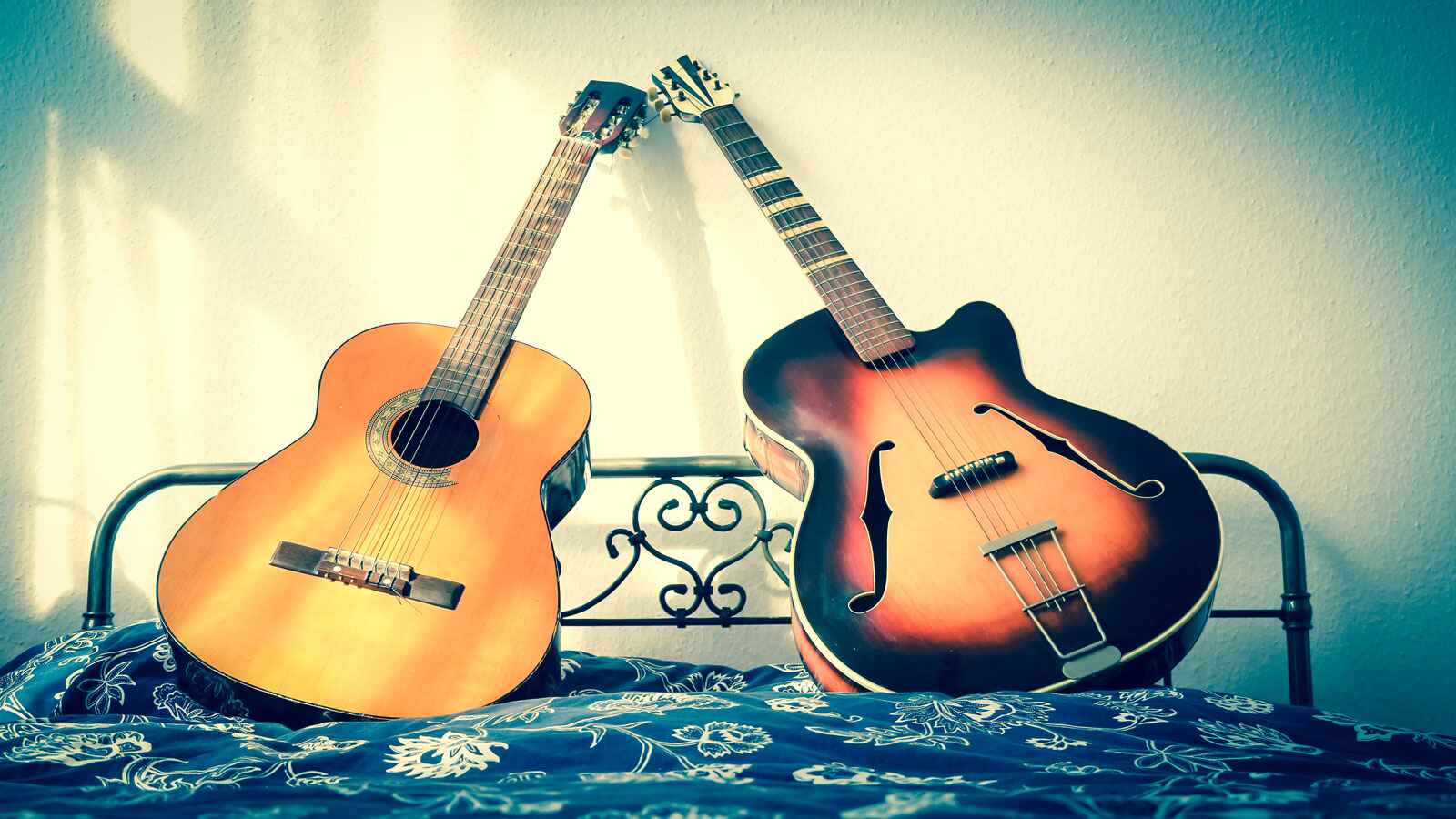Introduction
Playing the acoustic guitar is a deeply rewarding and fulfilling experience. Whether you’re a beginner or an experienced musician, understanding the chords of an acoustic guitar is essential for playing a wide range of songs and creating unique melodies. Chords serve as the foundation for creating harmonies, and mastering them will allow you to accompany yourself or others while singing or playing another instrument.
In this article, we will explore the basic anatomy of an acoustic guitar, delve into the concept of chords, and discuss different types of chords, including open chords and barre chords. We will also cover commonly used chord progressions and provide tips on transposing chords to different keys. By the end of this article, you will have a solid understanding of guitar chords and be well-equipped to start your guitar-playing journey or enhance your existing skills.
Whether you are a beginner starting from scratch or an intermediate player looking to expand your chord knowledge, this article will break down the complexities of guitar chords and make the learning process enjoyable and accessible.
So, without further ado, let’s dive into the captivating and harmonic world of acoustic guitar chords!
Basic Anatomy of an Acoustic Guitar
Before we delve into the world of guitar chords, it’s important to familiarize ourselves with the basic anatomy of an acoustic guitar. Understanding the different parts of the guitar will not only help us navigate our instrument more effectively but also provide a foundation for learning chords and playing techniques.
The major components of an acoustic guitar include:
- Headstock: Located at the top of the guitar, the headstock contains the tuners, which allow you to adjust the pitch of each string.
- Neck: The neck is the long, slender part of the guitar that connects the body to the headstock. It is usually made of wood and features frets, which divide the neck into different sections.
- Fretboard: Also known as the fingerboard, this is the front side of the neck where you press the strings to produce different notes and chords. It is typically made of wood and marked with fret markers to help guide your hand placement.
- Body: The body of an acoustic guitar is typically made of wood and consists of a soundboard (top), back, and sides. The shape and size of the body contribute to the guitar’s sound and resonance.
- Soundhole: Located in the center of the soundboard, the soundhole allows the sound waves to escape from the guitar, producing the instrument’s distinctive acoustic tone.
- Bridge: The bridge holds the strings in place on the body of the guitar. It transmits the vibration of the strings to the soundboard, amplifying the sound.
Familiarizing yourself with these components will help you navigate the guitar more effectively and understand how different techniques, such as fingerpicking and strumming, interact with the instrument’s structure. Take some time to study and familiarize yourself with the various parts of your acoustic guitar before moving on to learning chords.
Now that we have explored the basic anatomy of an acoustic guitar, let’s move on to the fundamental concept of chords and how they are formed.
Understanding Chords
Chords are combinations of three or more notes played simultaneously, creating a harmonious sound. They form the basis of many songs and are essential for understanding music theory and playing the acoustic guitar.
When it comes to chords, it’s important to understand the concept of intervals. Intervals refer to the distance between two notes. Each interval has a specific name, such as a major second, minor third, perfect fourth, and so on. These intervals determine the quality and mood of a chord.
Chords are typically built on the foundation of a root note, which serves as the starting point for constructing a chord. From the root note, we add additional notes using specific intervals to create various chord types, such as major, minor, diminished, and augmented.
Major chords have a bright, happy sound and are often associated with a sense of resolution. Minor chords, on the other hand, evoke more emotion and tend to have a sadder or melancholic quality.
To construct a chord, we use a combination of three or more notes from the major or minor scale. For example, a C major chord consists of the notes C, E, and G, which are the first, third, and fifth notes of the C major scale. Similarly, a D minor chord is made up of the notes D, F, and A from the D minor scale.
Understanding the structure and construction of chords is essential for playing the acoustic guitar. It allows us to create different voicings and variations of chords, enabling us to add depth and complexity to our playing.
Now that we have a basic understanding of chords and intervals, let’s explore the two main types of chords: open chords and barre chords.
Open Chords
Open chords are a fundamental aspect of playing the acoustic guitar. They are called “open” chords because they make use of open strings (unfretted strings), which contribute to the overall sound and resonance of the chord. Open chords are often played at or near the nut of the guitar, and they form the basis for many popular songs and music styles.
Open chords are typically easier for beginners to learn and play as they involve holding down multiple strings with one finger. They provide a solid foundation for understanding chord shapes and transitioning between different chords smoothly.
Some of the most common open chords include:
- C major: Played by placing your first finger on the first fret of the B string, your second finger on the second fret of the D string, and leaving the other strings open.
- G major: Formed by placing your second finger on the third fret of the low E string, your third finger on the third fret of the B string, and leaving the other strings open.
- D major: Created by placing your first finger on the second fret of the G string, your second finger on the second fret of the high E string, and leaving the other strings open.
- A minor: Played by placing your first finger on the first fret of the B string, your second finger on the second fret of the D string, and leaving the other strings open.
- E minor: Made by placing your second finger on the second fret of the A string, your third finger on the second fret of the D string, and leaving the other strings open.
These are just a few examples of the many open chords you can learn and utilize in your guitar playing. By practicing and mastering open chords, you’ll be able to play countless songs and accompany yourself or others while singing.
Remember, when playing open chords, it’s essential to focus on proper finger placement, applying the right amount of pressure on the strings, and strumming or picking the strings cleanly and evenly. Take your time to familiarize yourself with the chord shapes and practice transitioning between different chords smoothly.
Next, let’s explore another type of chord that is commonly used in more advanced guitar playing: barre chords.
Barre Chords
Barre chords are versatile chord shapes that allow you to play any major or minor chord up and down the fretboard. Unlike open chords, barre chords involve using one finger to press down multiple strings across a single fret, effectively “barring” the strings.
Barre chords can be a bit more challenging to master compared to open chords, but they open up a world of possibilities for playing chords in different positions and keys. Learning barre chords will greatly expand your chord vocabulary and enable you to play more complex and intricate chord progressions.
The foundation of barre chords lies in their movable nature. Once you learn the basic shapes, you can slide them up and down the neck to play different chords. For example, the shape of an E major barre chord can be moved up two frets to play an F# major chord, or up four frets to play G major.
One of the most common barre chord shapes is the E major shape, where you use your index finger to bar all the strings on a particular fret and use your other fingers to form the chord shape. Another popular barre chord shape is the A minor shape, which also utilizes the index finger to bar the strings and forms the corresponding major or minor chord shape with the other fingers.
Mastering barre chords requires a combination of strength in your fretting hand and precise finger placement. It’s important to focus on maintaining even pressure across the barred strings and ensuring that each individual note rings out clearly. Regular practice and gradual progression up and down the neck will help you develop the necessary finger strength and dexterity.
By incorporating barre chords into your playing, you’ll be able to play a wider range of chords, effortlessly transpose songs to different keys, and add depth and complexity to your guitar arrangements.
Now that we’ve explored open chords and barre chords, let’s move on to understanding commonly used chord progressions and how they can help you create memorable musical compositions.
Commonly Used Chord Progressions
Chord progressions are the sequence of chords played in a specific order. They form the foundation of many songs and help establish the mood and emotion of the music. Understanding common chord progressions will enable you to play a wide variety of songs and create your own compositions.
One of the most popular chord progressions in music is the I-IV-V progression. This progression is based on the relationship between the first, fourth, and fifth chords of a major scale. For example, in the key of C major, the I-IV-V progression would consist of the C major, F major, and G major chords. This progression is commonly heard in rock, blues, and country music.
Another common chord progression is the I-VI-IV-V progression. This progression is often found in pop, folk, and rock music and has a catchy and memorable sound. In the key of G major, the I-VI-IV-V progression would consist of the G major, E minor, C major, and D major chords.
The relative minor chord progression is also frequently used in various genres. This progression is based on the relationship between the major and minor chords that share the same key signature. For example, in the key of C major, the relative minor chord progression includes the A minor, D minor, and E minor chords. This progression adds a touch of melancholy and works well in ballads and introspective songs.
While these are just a few examples of commonly used chord progressions, there are countless other progressions to explore. As you become more familiar with different chord shapes, experiment with creating your own progressions and mixing them with unique strumming patterns to add your personal touch to the music.
Transposing Chords
Transposing chords refers to changing the key of a song or a chord progression to better suit your vocal range or the preferences of other musicians you may be playing with. Understanding how to transpose chords is an important skill for any guitarist.
To transpose chords, you need to have a good understanding of the musical intervals between chords. For example, if you want to transpose a song up one whole step, you would move each chord in the progression up two frets. Similarly, if you want to transpose a song down one half step, you would move each chord down one fret. By practicing transposing chords in different keys, you’ll become more versatile in playing a wide range of songs.
Now that we’ve explored chord progressions and transposing chords, let’s move on to some helpful tips for learning and practicing chords effectively.
Transposing Chords
Transposing chords refers to changing the key of a song or a chord progression to better suit your vocal range or the preferences of other musicians you may be playing with. Understanding how to transpose chords is an essential skill for any guitarist, as it allows you to adapt songs to your playing style and accommodate different musical situations.
To transpose chords, you need to have a good understanding of the musical intervals between chords. The interval between two notes determines the distance between them on the guitar neck. This knowledge helps you move the entire chord progression up or down the fretboard while maintaining the same relative relationship between the chords.
For example, if a song is originally in the key of C major and you want to transpose it to the key of G major, you would need to move each chord up by five half-steps or frets. This means that a C major chord would become a G major chord, a D major chord would become an A major chord, and so on. By maintaining the same interval relationship between the chords, you ensure that the song sounds familiar despite being played in a different key.
Transposing chords can also involve using a capo. A capo is a small device that clamps across the fretboard at a desired fret, effectively raising the pitch of the guitar without changing the chord shapes. This allows you to play familiar chord shapes in a higher key without having to barre the chords yourself. For instance, if you want to play a song in the key of D major but find it easier to play in open position, you can place a capo on the second fret and play the familiar open chords but with the sound of E major.
By practicing transposing chords in different keys, you become more versatile in playing a wide range of songs. It also enables you to play alongside other musicians who may prefer different keys or accommodate different vocal ranges. Understanding how to transpose chords empowers you to customize songs to suit your needs and create a more enjoyable musical experience.
Now that we’ve covered transposing chords, let’s move on to some helpful tips for learning and practicing chords effectively.
Tips for Learning and Practicing Chords
Learning and practicing chords is a crucial aspect of mastering the acoustic guitar. Here are some helpful tips to make the learning process more efficient and enjoyable:
1. Start with the basics: Begin by learning and mastering the essential open chords. These chords form the foundation for playing a wide range of songs and are easier to get started with as a beginner.
2. Practice regularly: Consistency is key when it comes to learning chords. Set aside dedicated practice time each day or week, even if it’s just for a few minutes. Regular practice will help you build muscle memory and make chord transitions smoother.
3. Take it slow: When learning a new chord, take your time to ensure each note sounds clear and distinct. Start by strumming each string individually to check for any muted or buzzing sounds. Gradually increase your speed as you become more comfortable with the chord.
4. Use a metronome: Practicing with a metronome can help you develop a sense of rhythm and timing. Start by playing the chords at a slow tempo and gradually increase the speed as you improve. This will not only improve your accuracy but also make your playing sound more professional.
5. Practice chord transitions: Focus on smoothly transitioning between chords. Start with two chords and practice switching back and forth between them. Once you feel comfortable, add more chords to the progression. Practice transitioning between different chords, paying attention to any areas that feel challenging, and work on improving those transitions.
6. Play along with songs: Choose songs that incorporate the chords you’ve learned and play along with the recordings. This will help you develop your sense of timing and learn how chords are used in a musical context.
7. Seek guidance when needed: If you’re struggling with a particular chord or have questions about your technique, don’t hesitate to seek guidance from a guitar teacher or online resources. They can provide invaluable advice and help you overcome any obstacles you may encounter.
8. Stay patient and persistent: Learning chords and becoming proficient on the guitar takes time and practice. Don’t get discouraged if you don’t see immediate progress. Stay patient, celebrate small victories along the way, and enjoy the journey of learning and playing the acoustic guitar.
By following these tips and dedicating yourself to regular practice, you’ll soon find yourself becoming more proficient in playing chords and unlocking the potential to create beautiful music on your acoustic guitar.
Conclusion
Learning and mastering the chords of an acoustic guitar is a journey that takes time, dedication, and practice. By understanding the basic anatomy of the guitar, exploring different chord types such as open chords and barre chords, and familiarizing ourselves with common chord progressions, we can unlock the potential to play a wide variety of songs and create our own compositions.
The knowledge of transposing chords adds another layer of versatility to our playing, allowing us to adapt songs to different keys and musical situations. By practicing regularly, focusing on proper finger placement, and taking advantage of resources such as metronomes and instructional materials, we can improve our chord-playing skills and enhance our musicality.
Remember that learning the acoustic guitar is a journey, and it’s important to stay patient, persistent, and enjoy the process. Celebrate small victories along the way and seek guidance when needed. Whether you’re a beginner starting from scratch or an experienced player looking to expand your chord repertoire, the key is to keep practicing, experimenting, and pushing your boundaries.
So, grab your acoustic guitar, strum those chords, and let the melodies flow. With time and dedication, you’ll unlock the full potential of the acoustic guitar and embark on a musical journey filled with creativity, self-expression, and joy.







